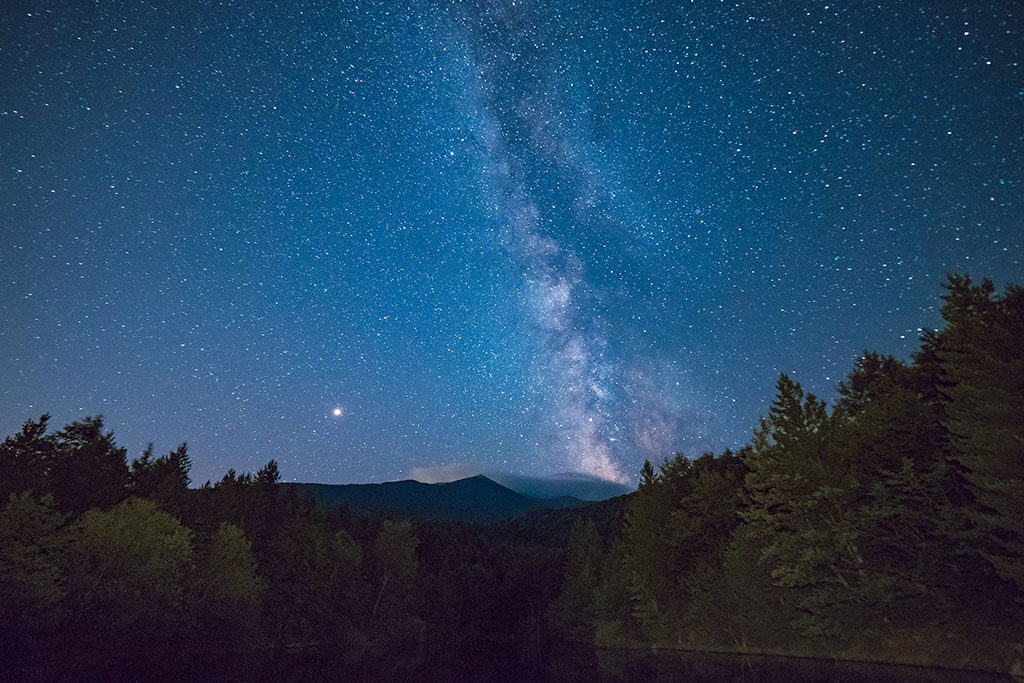
27
March
RASC Mississauga: Astronomy Night at the Riverwood Conservancy (CANCELLED)
Explore the universe with members of the Royal Astronomical Society of Canada. Telescopes will be set up to provide amazing views of the Moon, the planets and more! Meet at the Chappell House Lawn.

5
April
RASC Hamilton: Those Pesky Neutrinos
In the late 1990s, A Canadian research team played an important role in proving something we all should know about neutrinos: they are almost — but not quite — massless. When scientists first realized that nuclear reactions must be the power source for the Sun and stars, it seemed there would be no way to observe those reactions directly. Wolfgang Pauli invented the neutrino in 1930 to help explain radioactivity, and neutrinos were first measured in the 1950s.

28
March
York Science Forum: Evolution of the Universe
Join us as particle physicist and Nobel Laureate Arthur McDonald takes us on a journey through the underground Sudbury Neutrino Observatory (SNOLAB) to measure the smallest and most elusive particles in the universe.
Followed by a panel discussion also featuring York physicists Sampa Bhadra and Scott Menary, moderated by Matt McGrath, BBC journalist and York Science Communicator in Residence.
About the speaker and panelists

6
April
RASC Mississauga: The Most Distant Galaxies in the Universe
The combined power of infrared observatories both in space and from the ground has allowed us to observe extraordinarily distant galaxies. Some of the most distant are observed just a few hundred million years after the Big Bang, when the universe was merely 2% of its current age. Dr. Muzzin will talk about what what observatories like the Hubble Space Telescope have shown us about these exotic young galaxies. He will also introduce the James Webb Space Telescope, NASA's $9 billion dollar IR-optimized successor to Hubble.

7
April
Hamilton Amateur Astronomers: Spring Telescope Scope Clinic
Join the Hamilton Amateur Astronomers this April 7 for their Spring telescope clinic.

5
April
RASC Mississauga: Explore the Night Sky Astronomy Course
This four-night course (April 5, 12, 19 & 26) is open to budding astronomers ages 12 and up! The course is taught by members of the Royal Astronomical Society of Canada – Mississauga Centre. If the sky is clear, there will be observing for 30 minutes at the end of each session.
Please register before March 16, 2018.
Note: A minimum of 15 participants are required to run the course.

13
April
Hamilton Amateur Astronomers: Archaeoastronomy: The Astronomy of Civilizations Past
For millennia, people (including our First Nations) have used the sky as a clock, calendar, and compass. Astronomy thus became deeply rooted in their spirituality, mythology, and culture.

19
April
Thornhill Star Gazing Night
Telescopes will be available to view the Moon, the planet Jupiter with its moons, the planet Venus, and various deep-sky wonders. A local astronomer with a sky pointer will be on hand to trace out constellations. Dress warmly! Please stay close to the walkway to protect the wildflower plantings.
Anyone who can help out with a telescope or otherwise is warmly encouraged to do so. Especially if you are bringing equipment, a good place to park is on Charles Lane just west of where it meets Sumner lane.

3
May
UofT Physics: The H.L. Welsh Distinguished Lecturer Series Program 2018
The Department of Physics invites faculty, students and the public to its 44th annual celebration of physics.
The Welsh Lectures in Physics have been held annually since 1975 in honour of H.L. Welsh, a distinguished former faculty member in the Physics Department. They are the major public event in the life of the Department of Physics and are intended to celebrate discoveries in physics and their wider impact. They are intended to be broadly accessible to an audience drawn from across the university, other academic institutions and the interested public.

3
May
UofT AstroTour: Simulating the Universe
The life of a single galaxy is an extremely complicated affair and understanding the origin and evolution of the roughly 100 billion galaxies in our universe is even more so. But through heroic telescope surveys and state-of-the-art computer simulations, cosmologists have been progressing on this problem at an ever increasing rate. In this talk, George Stein will discuss current efforts to create realistic galaxies using some of the largest supercomputers on the planet, and will show what these simulations mean for future observations.
